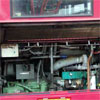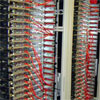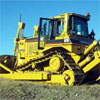Fire Fighting Systems
CO2
|
FIRE FIGHTING SYSTEMS OF CO2 F.S.S. has been making considerable advances in the development of CO2 technology regarding fire fighting in the last twenty five years. With a great sense of responsibility F.S.S. keeps its knowledge constantly updated, modifying and improving thereby its fire fighting branch for hundreds of CO2 installations in refineries, industries, ships, handicrafts, electricity establishments, electric equipment, computers etc. 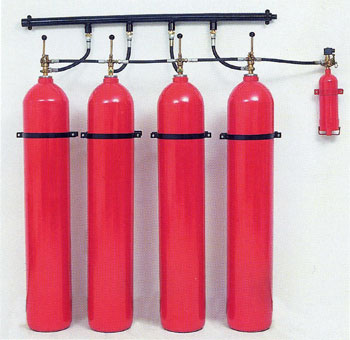
Typical Applications
Advantages of Carbon Dioxide
Various types of equipment are available such as the supply of a delay discharge nozzle system and also different methods of automatic prevention in crowded areas. CO2 is stored in room temperature in steel cylinders approved by the EEC. The pressure changes with the temperature and at 21°C it is approximately 59 bar. There can be a multiple heap of cylinders with concurrent release of CO2, according to the plan’s requirement. Table 1: Concentrations for deep seated hazards
Table 2: Determine basic CO2 quantity
Table 3: Determine higher concentrations for specific hazards
|
||||||||||||||||||||||||||||||||||||||||||||
|
CLEAN AGENT FIRE EXTINGUISHING SYSTEMS IG541- IG01- IG100- IG55 F.S.S. company develops technology for fire fighting systems for 15 years. We are constantly been informed and improve the sector of fire safety with responsibility for hundreds of IG-541, IG-01, IG-100 and IG-55 systems. Since the decade of the 60’s, the protection of electronic equipment from fire in the presence of people at the same place, was made by HALON 1301 (total flooding fire extinguishing systems). It was clean, it didn’t leave residues or dust in order to destroy the equipment. But in the year 1987, it was actually revealed that the HALON destroys the layer of ozone Specifically, it has the maximum ODP (Ozone Depleting Potential) and has a high GWP (Global Warming Potential), which have a very bad consequence at the “greenhouse effect”. Consequently, it was very essential that materials which replace HALON should be found. The new systems that have replaced HALON 1301 are Clean Agent Fire Extinguishing Systems called IG-541, IG-01, IG-100 and IG-55 and they are effective like HALON, they don’t leave residues as dust, water and they are harmless for the environment. Formal applications
Advantages of Clean Agent Fire Extinguishing Systems
PHYSICAL PROPERTIES OF INERT GASES (SI UNITS) |
|
FAT & OIL SYSTEMS FOR LOCAL APPLICATION Complex and unique requirements for perfect fire protection for local applications do not necessarily need complicated product arrangements. Simplicity, best performance and common sense are our answers to reaching highest efficiency and safety. There are many situations where dealing with a fire at source will both minimize the damage of valuable assets by extinguishing the fire early and before it more fully develops, enabling a quicker recovery of operations. The range of F.S.S. automatic fire suppression systems builds on the years of experience and technical knowledge that F.S.S. has acquired in the fire extinguisher field. F.S.S. automatic fire suppression systems can cover a range of applications and can be tailored to customer requirements, but the following common features apply: Simple to install and cost effective to maintain. Totally self contained requiring no electrical source and remaining operational during power interruption.
PRINCIPLES OF OPERATION The heart of any F.S.S. Automatic Fire Suppression System is our special sensor tubing which acts as a linear heat and flame detector. The pressurized sensor tubing is completely flexible, tough enough to withstand the harshest of conditions and can be run throughout the installation to follow the hazard risk area. Upon flame or heat impingement, the tube ruptures at the hot spot and by depressurization the cylinder valve is activated to operate the extinguishing system. No external energy or any electrical power needed for detection or actuation. The outstanding features to detect the fire and to activate the system are:
|
 | 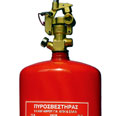 |
| FSS Florian Security Systems S.A., 30 Athinon Avenue, 10441 Athens | Tel: +30 210 5227672 | Fax: +30 210 5225173 | Email: fss@fss.gr |



